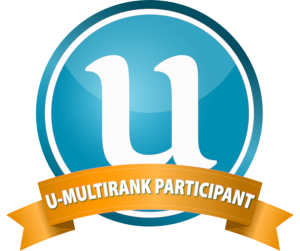Biomechanics and Ergonomics (LSPA_205)
About Study Course
Objective
To foster professional competence of students regarding human health, the importance of physical activity and sport in promoting and strengthening health, the structure and functions of the human musculoskeletal system, the mechanical and biomechanical foundations of movement, kinematics, dynamics and energy of movement, the biomechanical aspects of improving physical characteristics and movement management.
Prerequisites
Study courses mastered: Educational Psychology for Teachers, Teacher’s Professional Skills, Social-Emotional Learning, Legal Aspects of Pedagogical Process, Teaching and Learning in the Context of Diversity, General and Physical Activity Biochemistry, Human Anatomy and Dynamic Anatomy, Foundations and Methodology of Volleyball, Foundations and Methodology of Track and Field Exercises, Foundations and Methodology of Swimming, Foundations and Methodology of Gymnastics, Rhythmics and Rhythmic Combinations, Philosophy of Sport, Teacher’s Placement I.
Learning outcomes
1.1. Knows the curriculum in the field of health, physical activity and safety.
2. Understands human motor activity as a system of movements, a physical and biological process.
3. Knows the biomechanical aspects of the process of learning, evaluating and managing motor activities.
4. Knows the biomechanical models of muscles, the biodynamics of muscle contractions and the mechanical conditions for their functioning.
5. Know the methods for improving and assessing physical characteristics, the biomechanical conditions for selecting and performing physical exercises.
6. Understands the content and role of ergonomic biomechanics in optimising human activity, promoting health and safety.
1.7. Independently performs biomechanical analysis of movements and physical exercises.
8. Justifies the choice of physical exercises to improve person’s fitness, strengthen health.
9. Evaluates the effects of physical exercises on the human body and its functions, the muscle system.
10. Assesses the probability of injuries after physical exercises, explains the causes of injuries and prevention measures.
11. Assesses the age of person’s movements, justifies the peculiarities of using physical exercises for people of different ages, gender and level of training.
12. Assesses human posture and balancing capacity, takes measures to improve posture and balance.
1.13. Understands and explains mechanical and biological processes in living systems, the effects of physical exercises on the human body.
14. Knowing the general principles of motor ontogenesis is able to coordinate the choice of physical exercises with critical periods of human development, age and gender.
15. Able to justify the choice of physical exercises and performance conditions for improving strength, speed, endurance and other physical characteristics.
16. Integrates knowledge of biomechanics and ergonomics with knowledge of anatomy, physiology and sports training theory, addressing issues related to the chosen profession.
Study course planning
| Study programme | Study semester | Program level | Study course category | Lecturers | Schedule |
|---|---|---|---|---|---|
| Health, physical activity and security (sports and health teacher) | 4 | Bachelor | Required | Jānis Lanka | |
| Health, physical activity and security (sports and health teacher) | 3 | Bachelor | Required | Jānis Lanka | |
| Health, physical activity and security (sports, health and national defense teacher) | 4 | Bachelor | Required | Jānis Lanka | |
| Health, physical activity and security (sports, health and national defense teacher) | 4 | Bachelor | Required | Jānis Lanka | |
| Health, physical activity and security (sports and health teacher) | 4 | Bachelor | Required | Jānis Lanka | |
| Health, physical activity and security (sports, health and national defense teacher) | 3 | Bachelor | Required | Jānis Lanka |



